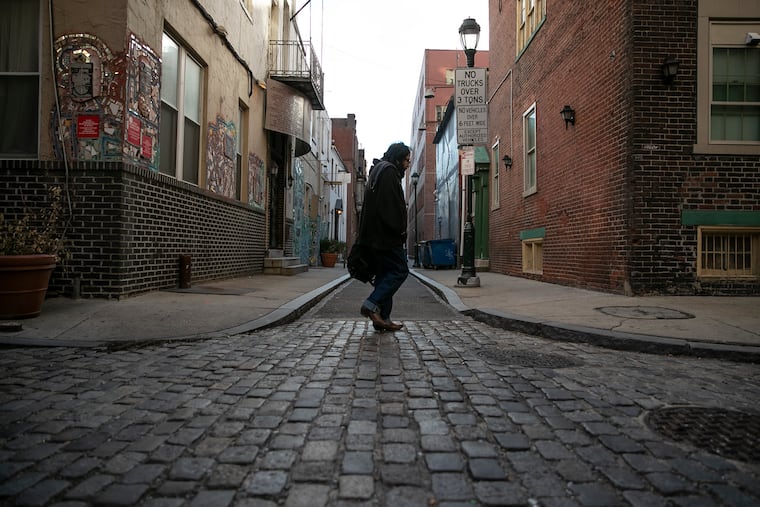Philly’s streets were once paved with wood. Camac Street may return to its historic roots — in 2021.
“The problem is there’s a reason why streets are made out of asphalt or concrete," said Steve Lorenz, chief highway engineer.

Frank Coyne, 64, of Narberth, grabbed a hunk of history when he could.
He snagged it years ago — a wooden block from South Camac Street in Philadelphia — and stashed it in a briefcase, unsure of the street’s future.
“I got a feeling this just wasn't going to keep,” he said.
Coyne’s intuition was right. What’s called Philadelphia’s only surviving wooden street is no longer lined with wooden blocks, but instead is paved temporarily with asphalt. That prompted Coyne to turn to Curious Philly to find an update on its status.
Curious Philly is where readers ask us questions, and our reporters hunt down the answers.
» READ MORE: ASK US: Submit your question to Curious Philly
The Streets Department insists a reconstruction between Walnut and Locust Streets is coming — just not in the immediate future. As with many things, money’s the holdup.
Repeating history
The 200 block of South Camac has had its share of ups and downs, with an upcoming fix being yet another attempt at returning the historic street to a material more common to Philadelphians in the early 1900s.
“I’m not going to say there’s not going to be a fourth time,” said Steve Lorenz, chief highway engineer. “The problem is there’s a reason why streets are made out of asphalt or concrete.”
And the reason for wood? It was to help quiet the clip-clop of horses, according to Inquirer archives. The Philadelphia Historical Commission notes the use of wood blocks was “explosive and short-lived,” with nearly 20 miles of wood block paving in 1919 before removal started.
“This is the only wooden street in the city of Philadelphia that’s actively used,” Lorenz said. “There’s some streets out there, there’s not a lot, where instead of concrete or cobblestone underneath the asphalt, there’s wood. And we don’t know where they’re at. We usually find it by accident when we mill the street.”
The downfalls of wood paving were hard to overcome.
The wood crumbled and rotted, and “on warm days, the rectangular blocks smelled of horse urine and creosote,” according to a 1997 Inquirer story outlining repairs for Camac.
But efforts to preserve history, expected to last two decades, unraveled. Weather helped to loosen the oak blocks, granting passersby the opportunity to snag pieces, while others were left “charred," The Inquirer reported in 1999.
“It’s like a puzzle. If you take one piece out, it all weakens,” engineering manager Bob Wright told The Inquirer in 1999. “We have to look at some other way to adhere them a little better.”
Further reconstruction efforts in 2012 failed, with blocks dissolving or popping out of place. Inadequate drainage was identified as a probable cause, Streets Commissioner David Perri told Inquirer columnist Inga Saffron in 2015.
‘Important to the city’
Lorenz said he believes the Streets Department ripped out all the wood along Camac and put in asphalt around 2017, seeking grant money in 2018 for reconstruction. Now the department is working with PennDot so it can move forward with ordering the wood, with black locust or white pine eyed as possibilities.
“Just knowing what the processes are and whatnot, it’s doubtful that we’ll be doing it in 2020,” Lorenz said. “So, more than likely we’ll be doing this in 2021.”
A $1.1 million grant for Camac also will be used for partial cobblestone reconstruction and repairs at the intersection of Mermaid Lane, Winston Road, and Germantown Avenue in Chestnut Hill, as well as the reconstruction of Waverly Street from 15th to Carlisle Streets in Center City, city spokesperson Kelly Cofrancisco said.
Lorenz, who thinks the efforts are “important to the city,” said the department would look at a better drainage system to correct past mistakes.
“From the city’s aspect, we don’t want to make the investments for it to fail within a few years," he said. "Now, again, because of the nature of where it’s at, what we do, and how the weather patterns are and whatnot, it’s not that it’ll last forever, but we want to try to get as long a use out of the street as possible.”